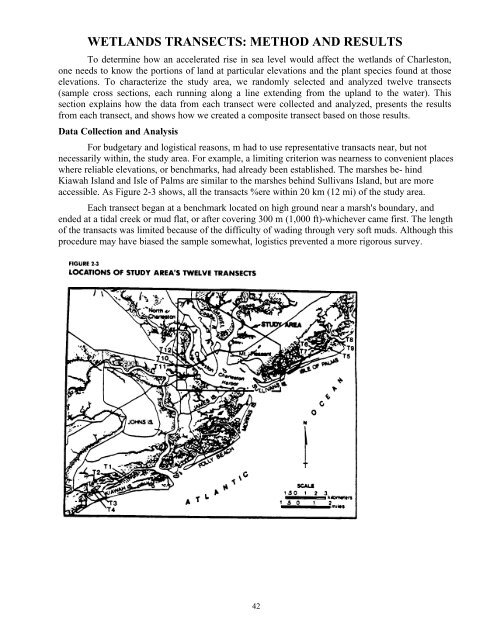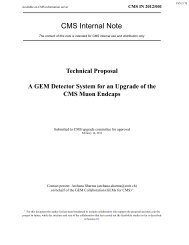Kana et al. 1988. S. Carolina Charleston SLR Case Study
Kana et al. 1988. S. Carolina Charleston SLR Case Study
Kana et al. 1988. S. Carolina Charleston SLR Case Study
You also want an ePaper? Increase the reach of your titles
YUMPU automatically turns print PDFs into web optimized ePapers that Google loves.
WETLANDS TRANSECTS: METHOD AND RESULTS<br />
To d<strong>et</strong>ermine how an accelerated rise in sea level would affect the w<strong>et</strong>lands of <strong>Charleston</strong>,<br />
one needs to know the portions of land at particular elevations and the plant species found at those<br />
elevations. To characterize the study area, we randomly selected and an<strong>al</strong>yzed twelve transects<br />
(sample cross sections, each running <strong>al</strong>ong a line extending from the upland to the water). This<br />
section explains how the data from each transect were collected and an<strong>al</strong>yzed, presents the results<br />
from each transect, and shows how we created a composite transect based on those results.<br />
Data Collection and An<strong>al</strong>ysis<br />
For budg<strong>et</strong>ary and logistic<strong>al</strong> reasons, m had to use representative transacts near, but not<br />
necessarily within, the study area. For example, a limiting criterion was nearness to convenient places<br />
where reliable elevations, or benchmarks, had <strong>al</strong>ready been established. The marshes be- hind<br />
Kiawah Island and Isle of P<strong>al</strong>ms are similar to the marshes behind Sullivans Island, but are more<br />
accessible. As Figure 2-3 shows, <strong>al</strong>l the transacts %ere within 20 km (12 mi) of the study area.<br />
Each transect began at a benchmark located on high ground near a marsh's boundary, and<br />
ended at a tid<strong>al</strong> creek or mud flat, or after covering 300 m (1,000 ft)-whichever came first. The length<br />
of the transacts was limited because of the difficulty of wading through very soft muds. Although this<br />
procedure may have biased the sample somewhat, logistics prevented a more rigorous survey.<br />
42
















